The NVIDIA GeForce GTX 1080 & GTX 1070 Founders Editions Review: Kicking Off the FinFET Generation
by Ryan Smith on July 20, 2016 8:45 AM ESTMeet the GeForce GTX 1080 & GTX 1070 Founders Edition Cards
Now that we’ve had a chance to take a look at all of the architectural features of Pascal, it’s time to get acquainted with the cards themselves.
As I mentioned in the introduction, the GTX 1080 and GTX 1070 Founders Edition cards are a bit of a departure from the norm for NVIDIA. Their actual construction isn’t too significantly changed (more on that in a bit), but NVIDIA has changed how their reference cards by another name are positioned.
In previous generations the reference cards were the baseline; NVIDIA’s board partners could either build higher end cards to sell at higher prices, or build cheaper cards and sell them near the MSRP to capture greater margins. However with the GTX 1000 series, the reference cards have become a higher end option, selling for anywhere between $50 and $100 higher than NVIDIA’s baseline MSRP. This in turn has shifted how NVIDIA’s partners go about pricing their own cards, as they can either price their high-end cards similar to (or more than) the reference card, or undercut NVIDIA’s pricing with their cheaper cards by pricing them closer to the MSRP.
This action has garnered a lot of feedback for NVIDIA, not too much of which has been positive. Ever since GTX Titan in 2013 in particular, NVIDIA’s reference cards have been the card to beat when it comes to blowers. The balance between heat/performance/noise has been finely tuned, and anecdotally speaking, they have proven to be extremely reliable. As a result, the fact that they are now priced as a premium option is vexing for some – myself included – since it moves them farther out of the hands of consumers.
NVIDIA’s rationale for this has been that they see the cards as premium cards and want to price them accordingly. This is no doubt true to an extent – NVIDIA’s reference coolers are not cheap, especially compared to a simple dual fan open air cooler – but on the other hand NVIDIA’s reference PCBs have always been relatively simple, especially compared to overclocking-focused cards. So how premium their reference design actually is will depend on the eye of the beholder.
What isn’t being said by anyone, but I suspect is going on behind the scenes, is that this is a move to help boost margins and satiate the board partners at the same time. It is not a big secret that reference cards fetch the board partners relatively low margins – they have to buy the complete kits from the GPU vendor – which makes them eager to move to semi and fully-custom cards as quickly as they can. By pricing the reference cards above MSRP, this raises the profit margins for everyone. At the same time it means the partners aren’t under quite so much pricing pressure; NVIDIA needs board partners, and it doesn’t do them any good if the partners don’t make any money. Granted, we’re talking about cards that go for upwards of $700, but as these are low volume cards to begin with, the total profits aren’t very high if margins are thin.
In any case, it’s NVIDIA’s hopes that pricing the reference cards over MSRP will also keep them on the market longer. Though due to the current card shortage, we don’t have a good picture of how this is going to play out; demand needs to first slow down to a point where board partners can make some informed decisions about what cards to produce. However, close NVIDIA partners like PNY and EVGA have continued to sell reference cards right up to the end of some model lines in the past, so I’m not convinced that this has really been an issue. But for now it is what it is.
Moving on to the design of the reference boards themselves, if you’ve seen a reference GTX 780/980/Titan card, then at least externally you have a good idea of what to expect. NVIDIA has retained the same basic design of their reference cooler, utilizing a cast aluminum housing and held together using a combination of rivets and screws. NVIDIA has also kept some of the black accenting first introduced by its predecessors, giving the card distinct black tinted polycarbonate window.
The big change here – and one that appears to be almost entire cosmetic – is that NVIDIA has made the shroud more angular. Rather than the largely squared off shroud on the GTX 980 and its ilk, the GTX 1080 and GTX 1070 use a shroud with more intentional triangular cuts. Over the last couple of years NVIDIA has been making triangles a bigger and bigger part of their branding (even Pascal has a triangle connection), and now this has extended over to their reference cards.
Triangles aside, the overall size of the card is unchanged from past reference designs; at 10.5” long, these cards will fit in the same amount of space occupied by past NVIDIA high-end reference cards. The blower design that NVIDIA has come to refine provides a nice balance between cooling and acoustics; it’s not as quiet as a good open air cooler, but because it’s self-exhausting it’s compatible with virtually every case out there, as there’s no need to rely on chassis cooling to handle the heat from the card.
Cracking open the card and removing the shroud exposes the card’s fan and heatsink assembly. Once again NVIDIA is lining the entire card with an aluminum baseplate, which provides heatsinking capabilities for the VRMs and other discrete components below it, along with providing additional protection for the board.
However in a divergence from the reference GTX 980, the reference GTX 1080 adopts the GTX 980 Ti’s vapor chamber cooler for providing heat transfer between the GPU and the heatsink. Vapor chambers are among the highest performing heat transfer mechanisms, which is why they have been used in NVIDIA’s 250W card. The fact that it’s now on the 180W GTX 1080 is due to a combination of factors; the higher price of the card affords more expensive mechanisms like the vapor chamber, and because NVIDIA is straight up maximizing their cooling capabilities for the GTX 1080. Either way, a vapor chamber should not be necessary for a 180W card – and some discussion could be had about just how useful it is – but none the less it gives the GTX 1080 a top-tier cooling system for a blower type card.
Meanwhile the GTX 1070 takes things down one notch. NVIDIA’s 150W card gets a GTX 980-style cooling system, replacing the vapor chamber with a simpler heatpipe based setup. The vapor chamber may very well be overkill for the GTX 1080, but it definitely would be for the GTX 1070, so a heatpipe baseplate setup is still more than enough for a lower power card like the GTX 1070.
Popping off the cooler, we see NVIDIA’s reference PCB. Unsurprisingly, it’s not too far removed from the reference GTX 980 PCB. At the center we find the GP104 GPU, surrounded by 8 8Gb Micron GDDR5X memory modules, rated for 10Gbps each.
Towards the far side of the PCB we find the card’s power delivery components, which for GTX 1080 is composed of a 5+1 phase design. Here NVIDIA is using 5 power phases for the GPU itself (one more than GTX 980), and then another phase for the GDDR5X. For a 180W card this configuration is more than enough for stock operations and mild overclocking – GTX 1080’s power target limit is 120%, or 216W – however hardcore overclockers will probably end up gravitating towards custom designs more with more heavily overbuilt power delivery systems.
One thing that isn’t immediately evident looking at the PCB is the overall efficiency of the design. One of NVIDIA’s marketing angles for the GTX 1080/GTX 1070 is the craftsmanship of the reference PCB and component selection, which they indicate has tighter tolerances than the GTX 900 series. Among other changes, NVIDIA has been able to reduce peak voltage noise through a combination of dual-FET VRMs and greater filtering by the capacitors. The end result is that NVIDIA is claiming that the GTX 1080’s power delivery circuitry is around 6% more efficient than the GTX 980’s.
Meanwhile for the GTX 1070, we have the same board with a slightly different configuration. Power delivery is down to 4+1, and the Micron GDDR5X has been replaced with standard 8Gbps GDDR5.
Flipping the card over to the back, we find NVIDIA’s new backplate. The new plate is primarily to protect the backside of the card (there aren’t any major components on the back to cool) and like the GTX 980 before it, includes removable components. The backplate is split into two parts, and either one or both parts can be removed. The idea behind this split is that similar to the GTX 980’s backplate, while the backplate is nice to have, it gets in the way of tightly packed SLI setups. So removing the plate piece directly opposite a fan would give an adjacent card more room to pull in fresh air for cooling purposes.
Moving on, towards the top of the card we find the requisite SLI and power connectors. With the GTX 1000 series NVIDIA has become the latest company to shift from dual 6-pin power connectors to a single 8-pin power connect for cards that need between 150W and 225W. Per the relevant specifications, the power delivery capabilities of the two configurations are identical. But one cable is easier to route and plug in than two, making for slightly cleaner builds and happier technology editors. As for the SLI connectors, as we discussed in our SLI section, these connectors have the same physical interface as the older SLI connectors, but now operate at up to 650MHz on Pascal. A recent LED bridge – or better still, the new HB bridge – is necessary to get the best performance out of SLI with these cards.
Meanwhile, looking at NVIDIA’s display I/O configuration, it’s physically unchanged from prior reference cards. What’s new here is that Pascal supports the newer DisplayPort 1.3/1.4 standards, along with HDMI 2.0b. This means we’re looking at 3x DisplayPort 1.3/1.4, 1x HDMI 2.0b, and 1x DL-DVI-D. The latter is also a change from GTX 980, as NVIDIA has gone from a digital + analog DVI port to a pure digital DVI port. So if for whatever reason you wanted to hook up an analog monitor to a $400+ video card, you will need a DisplayPort to VGA adapter, as GTX 1080/1070 do not provide a native analog output.
It should also be noted that as the physical port arrangements haven’t changed in a generation, neither have the underlying display capabilities. Like Maxwell 2 before it, Pascal supports up to 4 displays, which can be muxed among 6 display outputs.


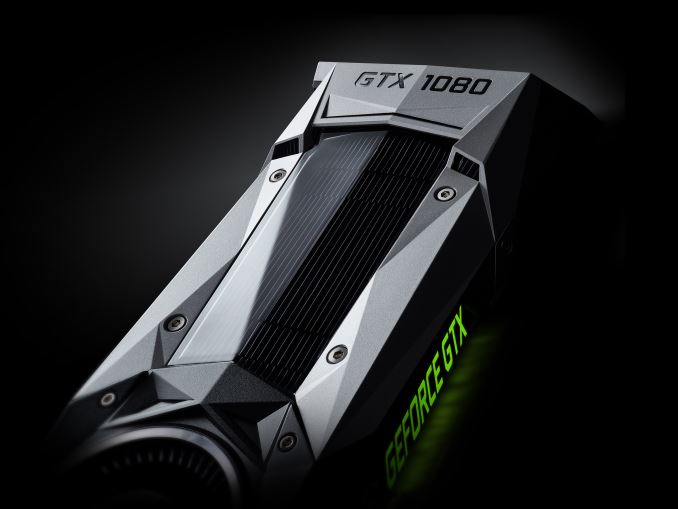

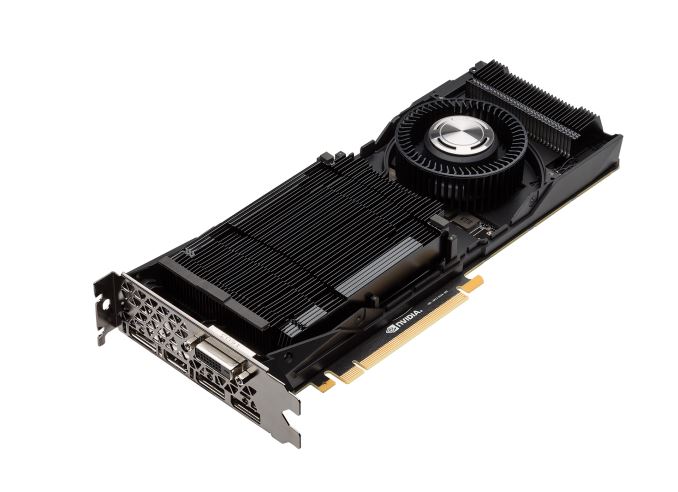
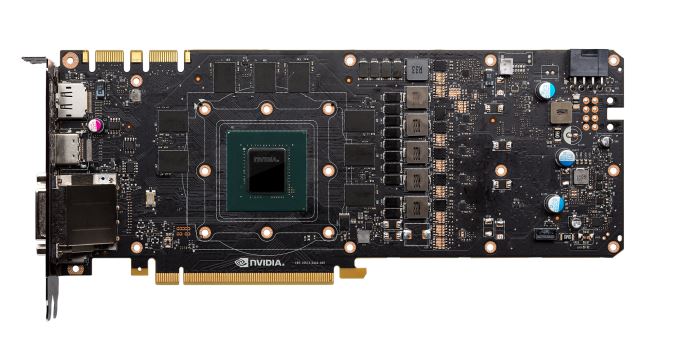
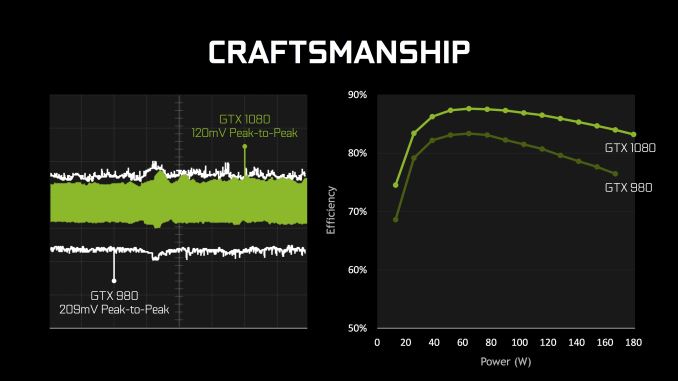
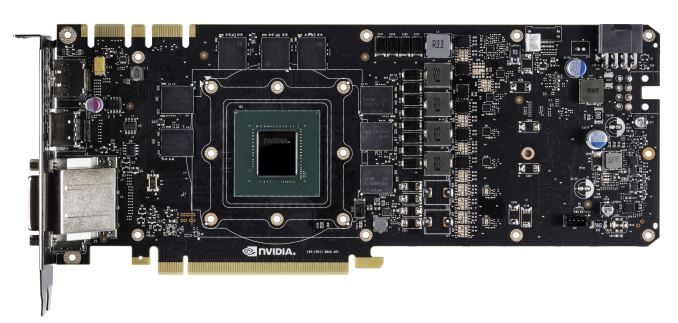
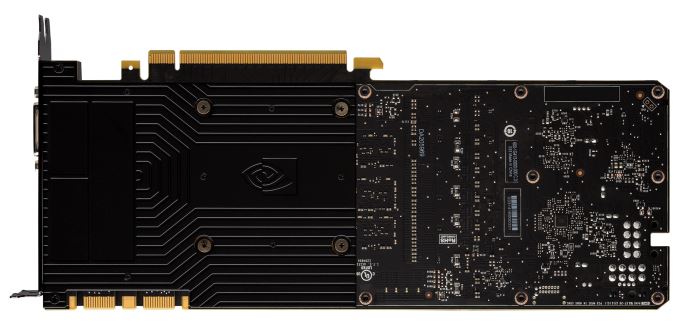
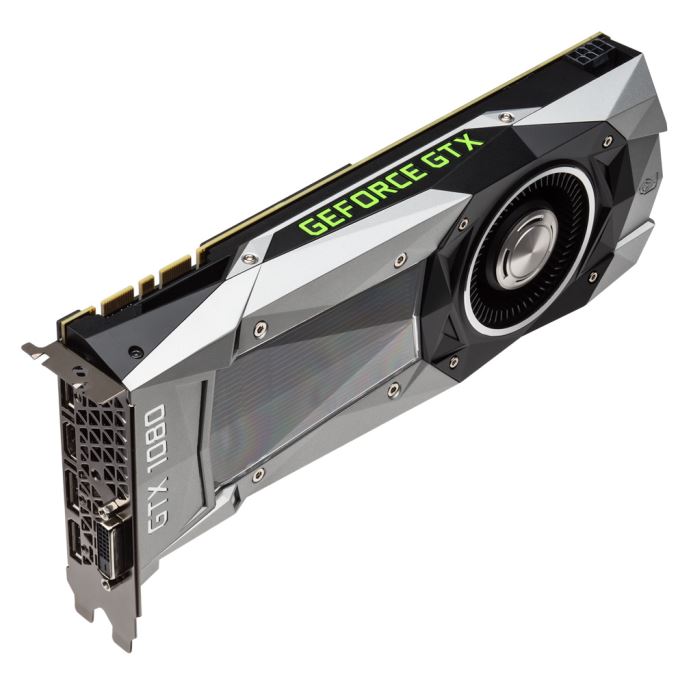
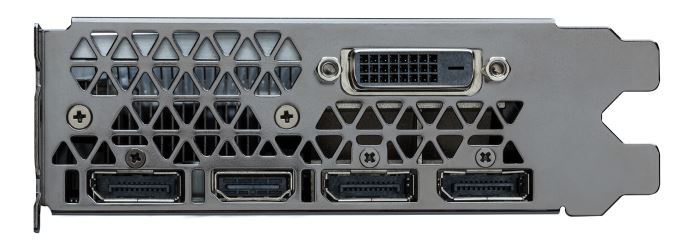








200 Comments
View All Comments
Ranger1065 - Thursday, July 21, 2016 - link
Your unwavering support for Anandtech is impressive.I too have a job that keeps me busy, yet oddly enough I find the time to browse (I prefer that word to "trawl") a number of sites.
I find it helps to form objective opinions.
I don't believe in early adoption, but I do believe in getting the job done on time, however if you are comfortable with a 2 month delay, so be it :)
Interesting to note that architectural deep dives concern your art and media departments so closely in their purchasing decisions. Who would have guessed?
It's true (God knows it's been stated here often enough) that
Anandtech goes into detail like no other, I don't dispute that.
But is it worth the wait? A significant number seem to think not.
Allow me to leave one last issue for you to ponder (assuming you have the time in your extremely busy schedule).
Is it good for Anandtech?
catavalon21 - Thursday, July 21, 2016 - link
Impatient as I was at the first for benchmarks, yes, I'm a numbers junkie, since it's evident precious few of us will have had a chance to buy one of these cards yet (or the 480), I doubt the delay has caused anyone to buy the wrong card. Can't speak for the smart phone review folks are complaining about being absent, but as it turns out, what I'm initially looking for is usually done early on in Bench. The rest of this, yeah, it can wait.mkaibear - Saturday, July 23, 2016 - link
Job, house, kids, church... more than enough to keep me sufficiently busy that I don't have the time to browse more than a few sites. I pick them quite carefully.Given the lifespan of a typical system is >5 years I think that a 2 month delay is perfectly reasonable. It can often take that long to get purchasing signoff once I've decided what they need to purchase anyway (one of the many reasons that architectural deep dives are useful - so I can explain why the purchase is worthwhile). Do you actually spend someone else's money at any point or are you just having to justify it to yourself?
Whether or not it's worth the wait to you is one thing - but it's clearly worth the wait to both Anandtech and to Purch.
razvan.uruc@gmail.com - Thursday, July 21, 2016 - link
Excellent article, well deserved the wait!giggs - Thursday, July 21, 2016 - link
While this is a very thorough and well written review, it makes me wonder about sponsored content and product placement.The PG279Q is the only monitor mentionned, making sure the brand appears, and nothing about competing products. It felt unnecessary.
I hope it's just a coincidence, but considering there has been quite a lot of coverage about Asus in the last few months, I'm starting to doubt some of the stuff I read here.
Ryan Smith - Thursday, July 21, 2016 - link
"The PG279Q is the only monitor mentionned, making sure the brand appears, and nothing about competing products."There's no product placement or the like (and if there was, it would be disclosed). I just wanted to name a popular 1440p G-Sync monitor to give some real-world connection to the results. We've had cards for a bit that can drive 1440p monitors at around 60fps, but GTX 1080 is really the first card that is going to make good use of higher refresh rate monitors.
giggs - Thursday, July 21, 2016 - link
Fair enough, thank you for responding promptly. Keep up the good work!arh2o - Thursday, July 21, 2016 - link
This is really the gold standard of reviews. More in-depth than any site on the internet. Great job Ryan, keep up the good work.Ranger1065 - Thursday, July 21, 2016 - link
This is a quality article.timchen - Thursday, July 21, 2016 - link
Great article. It is pleasant to read more about technology instead of testing results. Some questions though:1. higher frequency: I am kind of skeptical that the overall higher frequency is mostly enabled by FinFET. Maybe it is the case, but for example when Intel moved to FinFET we did not see such improvement. RX480 is not showing that either. It seems pretty evident the situation is different from 8800GTX where we first get frequency doubling/tripling only in the shader domain though. (Wow DX10 is 10 years ago... and computation throughput is improved by 20x)
2. The fastsync comparison graph looks pretty suspicious. How can Vsync have such high latency? The most latency I can see in a double buffer scenario with vsync is that the screen refresh just happens a tiny bit earlier than the completion of a buffer. That will give a delay of two frame time which is like 33 ms (Remember we are talking about a case where GPU fps>60). This is unless, of course, if they are testing vsync at 20hz or something.